What if..?
Index of Thorsten Overgaard's user review pages on Leica M9, Leica M9-P, Leica M-E, Leica M9 Monochrom, Leica M10, Leica M10-P, Leica M10-D, Leica M10-R, Leica M10 Monohcrom, Leica M11, Leica M 240, Leica M-D 262, Leica M Monochrom 246, Leica SL, Leica SL2, Leica SL2-S, as well as Leica TL2, Leica CL, Leica Q, Leica Q2 and Leica Q2 Monochrom:
By: Thorsten Overgaard
<---- See the article about the Leica M Monochrom here (that was released in Berlin on May 10, 2012)
<---- See the article about the Leica M Type 240 here (that was released at Photokina 2012 on September 20, 2012)
What if..?
By Thorsten Overgaard, April 2012
(Updated August 2012, September 20, 2012 and May 2013)
For many years Leica Camera had their main contact with their users via the Customer Service department, meaning when something had gone wrong. For some years Leica Camera AG have been practicing a new strategy of having contact with their users long before they start thinking of new products.
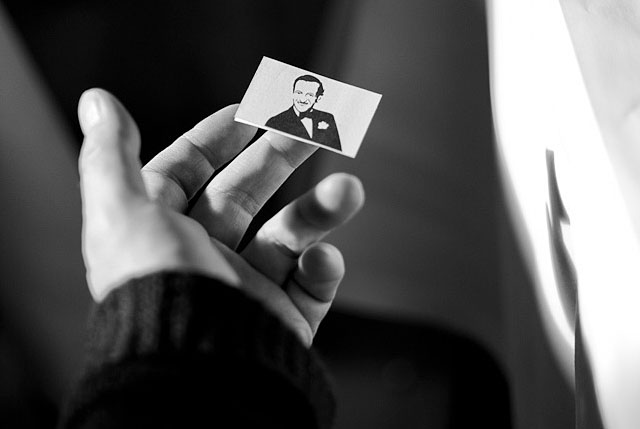
Also, as part of a new way of doing things, new products are released without they are being talked about before they are actually released
At the actual release parties a select group of users of the Leica cameras - along with journalists and bloggers - are invited to the product releases, as in New York on September 9, 2009 when the Leica M9 surprisingly was released, in June 2011 in Paris when the Leica M9-P was released. And again in Berlin on May 10, 2012 when the Leica M Monochrom was released and at the pre-Photokina release party on September 20, 2012 where the Leica M Type 240 was released.
This all allow us to hope that what we have been hoping for as users of Leica cameras may in fact become reality. And also, the new strategy of not talking about it allow - or perhaps even encourage - us all to speculate. The 'release' of the Leica S2 long before anything but a prototype existed have the tendency to create a lot of interest in a product that doesn't yet exist, as well as criticism of features nobody actually know anything about. As it was also the case with the CMOS sensor on the Leica M Type 240 that was 'released' long before the camera was available for test (again lots of criticism and speculations).
But whereas we as users are concerned with our next camera, Leica Camera has a whole future of different product lines in view ... and that might make things a little more difficult to predict.
From technical oriented to photography oriented
Not too many years ago, less than 10 actually, Leica Camera AG spokespersons would speak in no uncertain terms about how film was superior and the digital age of photography was theater thunder in the horizon. In due time the world would rediscover the virtues of film cameras!
They said.
Since then, the development has moved fast forward and what had previously been considered impossible, became reality. The Leica S2 medium format camera was developed fresh from nothing to a 37.5 MP cameras the size of a Canon 5D and is a success in sales figures despite delays in parts of the system essential to the professional users they S2 was aimed at.
The Leica M9 full frame digital rangefinder camera with the feel of a Leica M4 or Leica M6, but with instant gratification in 18MP digital files, was introduced on September 9, 2009 at 9:09 AM in New Yorkand has helped raise Leica Camera AG sales figures and the markets confidence in the brand.
In a way, it is now again as it used to be in the old days: It was Leica that invented the 35mm film format 90 years ago which the majority of camera systems are still relying on. It was Leica that defined a roll of film to 36 frames (as this was how far out Oskar Barnack could stretch his arms). It was Leica that invented the auto focus since 1960 (and also some unnamed Leica executive who said nobody would ever want it why they sold the rights), and it was Leica that invented the hot shoe for flash. And the list goes on...
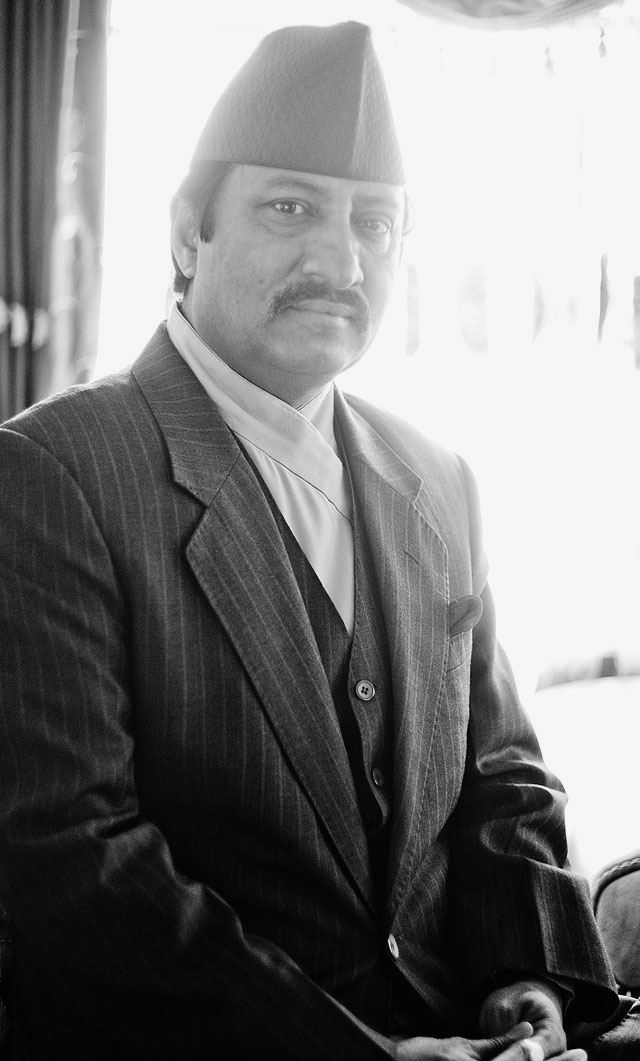
Leica M9 with Leica 50mm Summicron-M f/2.0. Photo: Thorsten Overgaard, Nepal, March 2012
With a touch of nostalgia
As the company heads into the future technologies with Dr. Kaufmann as the person who presumably drives the company (and the engineers to the limit of what they thought was possible), the company also grow both more trendy, modern and streamlined.

The Leica Camera AG factory buildin at Am Leitz Park 1 as it looked when I visited on May 9, 2013. Leica M Type 240 with Leica 21mm Summilux-M ASPH f/1.4. © 2013 Thorsten Overgaard
The small renovation of the headquarter in Solms gives a hint, and the Leica Stores that seem to open every month in new hot spots around the globe is just a hint of what the drawings of the new headquarter in Wetzlar (a few kilometers from the current factory in Solms) reveal about a modern and strong Leica Camera AG.
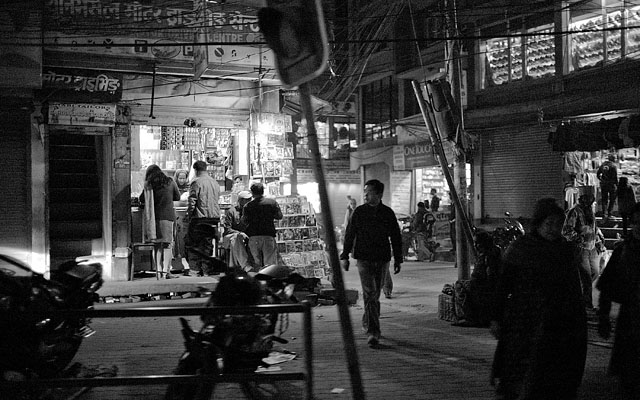
Leica M9 with Leica 35mm Summilux-M ASPH f/1.4. Photo: Thorsten Overgaard, Nepal, March 2012.
But as this all moves forward, Leica Camera AG is also reconnecting with the past; the reason why Leica made cameras and the reason why some of the worlds best photographers used them.
The corporation with Magnum Photography announced in June 2011 to name one, and if one visit the Leica dungeons one will find the walls not decorated with whiteboards and color prints made from Microsoft Excel, but with real classic photography prints from the great masters.
When Leica mean business, they mean photography.
Which is also why the Leica Galleries will be increasing in size, quality and importance to the brand.
But don't take the nostalgia as a sign that Leica hope to return to the past with film. Take it as a sign that they try to understand the photographers even better and fulfill the actual needs for cameras as a tool of the artist. And then ... make a note that Leica Camera may re-invent new technology which repeat the old, but in ways so the actual need of photographers is fulfilled by technical genius.
As when - we know now - Leica re-invented a modern camera to fit the needs of an old master like Henri Cartier Bresson and even named it "Henri" as the working title till they decided for the name Leica M Monochrom.
Let's not forget - it all starts with the glass
Apart from what Leica has of technical and engineering capacity (they also felt the need to invent their own Central Shutter [CS] system for the Leica S lenses as the industry standard every other medium format camera producer rely on wasn't good enough for Leica) they have preserved optical knowledge from at least 100 years of brilliant research and application of optical magic, perhaps even 160+ years of knowledge from back in 1849 when Optical Institute was established by Carl Kellner in Wetzlar and started building a reputation of the best optics in the world.
This preserved experience and knowledge is unique in an industry where the best heads working at leading brands such as Nikon, Canon, Zeiss and Hasselblad have studied the industry standard optical text-book written by Prof. Max Berek, the first designer at Leica creating optics for cameras, followed in a straight line by brilliant people, first Walter Mandler and then the current Peter Karbe.
Where the other optical designers has the text book, Leica optics department have the samples, the prototypes, the notebooks. Also, Leica Camera is said to have about + 2,000 glass patents; types of glass together with knowledge about their specific qualities (the glass in front of the Leica M9 came from one of these patented glass types).
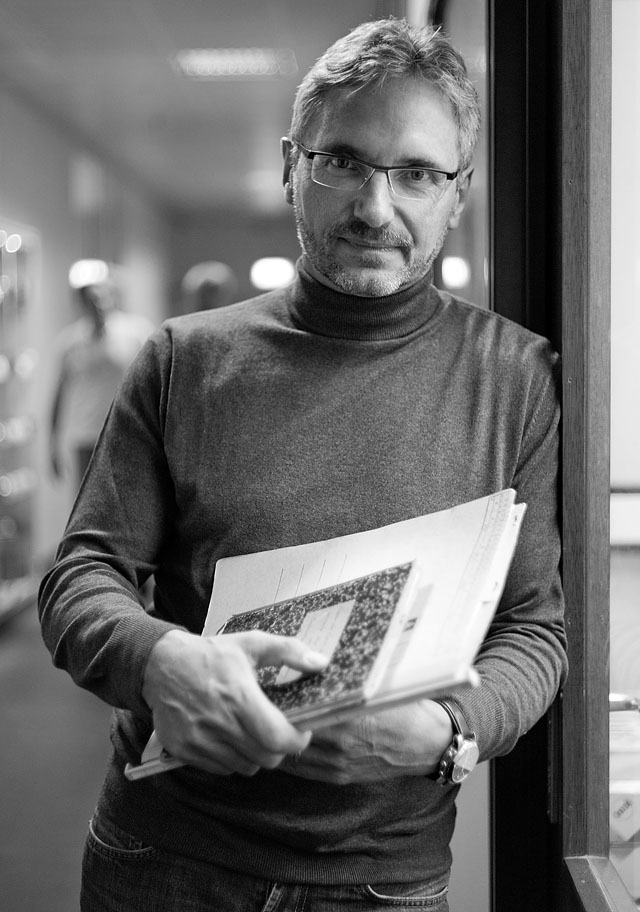
Peter Karbe with one of the many notebooks, "Optische Konstruktionsbücher" of Prof. Max Berek from 1930. Photo: Thorsten Overgaard.
Leica Camera rely on the past knowledge and rethink, reinvent and invent new ways to control light. Peter Karbe have renewed and redefined the 50mm lens range with the 50mm Summilux-M ASPH f/1.4 and the 50mm Noctilux-M ASPH f/0.95 and latest added two outstanding lenses, the 21mm Super-Elmar-M ASPH f/3.4 and 35mm Summilux-M ASPH f/1.4, not to mention the Leica 50mm APO-Summicron-M ASPH f/2.0.
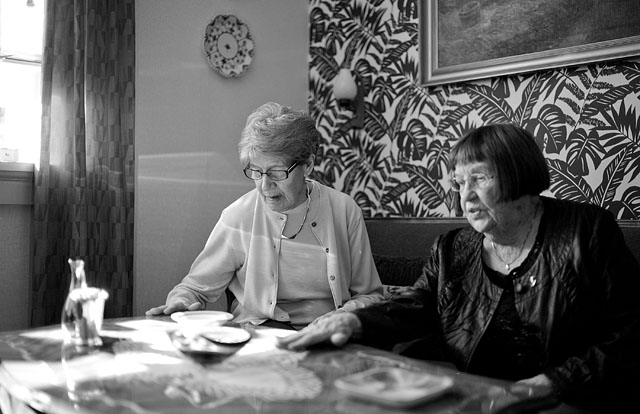
Leica M9 with Leica 35mm Summilux-M ASPH f/1.4. Photo: Thorsten Overgaard, Denmark, March 2012.
What if ... he has finalized his well known - let's not hesitate using as strong a word as - obsession of developing the mother of all 50mm lenses (the Leica 50mm APO-Summicron-M ASPH f/2.0).
And what if ... he if working on further new lenses in the widest wide angle range, more extreme 28mm and 35mm lenses, not to mention 75mm and 90mm.
What if ... new M tele lenses
And with the Leica M we will be seeing maybe 180mm and other tele lenses, as hinted in my interview with Stafan Daniel at Photokina 2012 where he said they would probably not start production of R-lenses again, but then added that they might do other lenses.
The EVF (Electronic Visioflex Finder) on the Leica M also makes it possible to produce lenses that block the view of the acoustic classic viewfinder. Hence, an extreme fish eye and for example a 75mm f/1.2 would not be a problem.
When Peter Karbe and his team at Leica was asked to make a replacement for the 50mm Noctilux-M ASPH M f/1.0 they did not just an improved the design and add ASPH, they did a f/0.95 (worlds fastest 50mm lens), with floating element - without making the lens bigger! So if - or when - Peter Karbe takes on the 75mm and 90mm, then what?
What if ... he just doesn't find it that interesting doing just a new version but something radical..?
The list continues. What about a Leica 28mm Summilux-M ASPH f/1.4 ...?

Leica M9 with 50mm Summicron-M f/2.0 (II). Photo: Thorsten Overgaard, Singapore, February 2012.
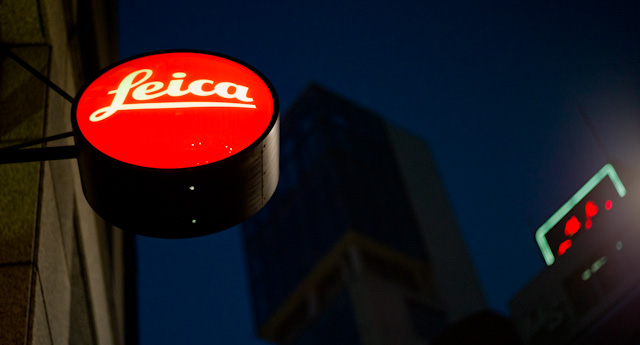
They all say they saw a red sign and knew their destiny ...
The remarkable about Leica is that they seem to employ a great number of very talented people, some pure geniuses, despite the fact the factory lie so far out in nowhere that even Germans fail to know the place.
When you visit the factory and speak to young and old employees, they all seem to claim to have been lying in their childhood bed where they could see the red Leica logo on top of the building in Wetzlar and then decided this red sign was their destiny!.
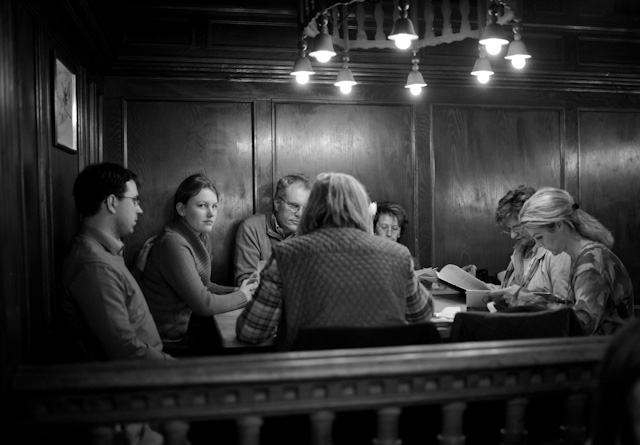
Leica M9 with Leica 35mm Summilux-M ASPH f/1.4. Photo: Thorsten Overgaard, March 2012
Factually it is unlikely that so many children's bedrooms have been located in a way so they could see the sign. A more plausible history is the unconfirmed but widely known (hence it must be true) that a spaceship landed more than 150 years ago in a field on it's way to an optical award show in another galaxy. With so many opticians stranded on planet Earth with little to do other than making prescription glasses, they tried to make the stay a little more entertaining by creating some more advanced optical constructions.
This is the only reasonable explanation for this phenomen out in nowhere, and it is likely that the name Kaufmann indicates that this was the family who owned the grocery store on the spaceship. How else would he have made the money to buy the factory?
And the first living specie in orbit ... Leika.
Not a coincidence.
I have already said too much, and I haven't even said that the new Leica Camera AG headquarter looks like a flying saucer. In fact, just like the new Apple headquarter. If these things are not headquarter but things that can fly, we're going to have a lonely time ahead.

Leica M9 with Leica 35mm Summilux-M ASPH f/1.4. Photo: Thorsten Overgaard, Denmark, March 2012.
Leica as a true luxury brand
Kaufmann who took over the majority of the stocks, in fact almost all of them, just a few years ago, like to present Leica as the worlds only luxury brand in cameras. And in the same breath he will state that people keep asking that Leica will lower the prices so more can buy - "but that will never happen," he promises.
Now the word luxury comes from Latin 'excess' and can be defined as "an inessential, desirable item that is expensive or difficult to obtain."
Luxury brands live an exotic life these days. If one visit a Louis Vuitton, Hermes, Bentley or similar luxury store anywhere in the world, it's obvious that they have a very special position. And if one travel to Asia where the economic future definitely lies, they have not just one store but several stores in the same town.
As I see it, Leica belong to the royalty of luxury brands with Hermes, Goyard Louis Vuitton and Porsche. The royalty of luxury brands are the ones that posess special knowlege and handcraft their products. Anyone with money can build a luxury brand, but having a brand with special knowledge accumulated over 100+ years and still based on that special knowledge ... very few has that. That is history and tradition.

Leica M9 with Leica 35mm Summicron-M ASPH f/2.0. Photo: Thorsten Overgaard, March 2012.
Leica fit right into this type of luxury brand, and when one visit a city, the Leica Store is usually found close to the Louis Vuitton, Hermes and Apple Store. In Singapore Louis Vuitton and Leica Store are next to each other. In Japan Hermes still own part of the Leica Japan, and the store manager at the Leica Ginza Store in Tokyo previously was with Hermes.
If one pay attention it is also obvious that Leica is expanding the most in the areas where luxury brands - the economy - is expanding.
So we can rule out that Leica is working on any new products that will be less expensive than what other brands can do. Simply because a Leica has an added value the day you buy, in daily use, as well as the day you sell it.
Now, it important to mention that the reason Leica is expensive is not so at to have a position as something few can afford. The point is that the whole philosophy behind the product is to make the best ... at any price.
The price of Leica cameras and lenses are not high because they are inefficient in producing them. It's because it's the best you can get and it's a luxury brand.
Leica legacy
Leica has something in abundance that other camera brands doesn't have. Leica cameras are part of history, as illustrated in the book 99 Years that was released at Photokina 2012. So many historic moments, so many great photographers ... Leica was there.

Leica M9. Photo: Thorsten Overgaard, London, March 2012.
Selling stocks in Leica to get ready to future expansion
In October 2011 "The Kaufmann Family" (via acm Projektenwicklung GmbH) sold a minority of the stocks to Blackstone. While things can change with the ups- and downs of the world economy, what seem to have essentially happened, is that "The Kaufmann Family" took off some of the burden of being the only stockholder. Realistically, even if "The Kaufmann Family" had a good deal of extra money besides what was invested in Leica Camera AG, those money would have to be (invested) somewhere. And it is likely that those invested money didn't look that valuable on paper, and if those who finances the production, R&D and expansion of Leica - not to mention the building of two new factories in Wetzlarer and Portugal - would ask for more security (fair or not), where would Kaufmann get it from.
So that might be one side to the story. Another could be that by selling 44% of Leica Camera AG Kaufmann likely got as much for those 44% as he originally invested in owning most of Leica Camera AG. That is a guess, and while Kaufmann may come across as a philantroph, the invested money in Leica Camera AG is the family fortune realized through more than 100 years by Kaufmann and his two brothers parents and grandparents.
The more interesting part however is the future and the third part of the story: Implied in the sale of 44% of Leica Camera AG to Blackstone (for whom this is really not a big investment) is also the possibility to finance further growth. Leica had two years of unbelieveable expansion, and then in 2012 the expansion would halter simply becauase they can't produce more than they do. Hence the two new factories in Wetzlarer (opens in 2013-2014) and Portugal (opens in 2012).
But there is also a future demand for Leica products and luzury products in Asia and mainly China. So in the whole calculation of the price for 44% stock in Leica versus the possible future financing this partnership may lead to, is the possibility to feed an almost infinite market in China and Asia.
An intersting thing in the sale of 44% and the choice of 'partner' is that Kaufmann maintain complete control. No doubt he could have sold for a higher price elsewhere, and it is also likely that there amongst the fans of Leica would be one or more who could offer that type of financing. But de facto Kaufmann choose a partner that have no knowledge or 'personal interst' in what the company actually produce or if Leica Camera AG makes a Monochrom camera or not. Kaufmann has a vision, and the investment partner has been choosen so as not to interfer with that vision.
Leica M is the core
Leica M was the first camera system established with the Ur-Leica back in 1908 as prototype. Back then with a black metal plate in front of the lens acting as the shutter, and since then Leica Camera have refined the camera with fast and silent shutter, better and more advanced optics in bayonet mount, built-in lightmeter and latest full frame digital sensor.
The R system has come and gone (and was basically just an answer to the Japanese SLR cameras; Leica has always been best at going their own ways and not try to follow others technologies), the Leica S2 perhaps was a wrong ambition that have cost a lot of investment in not just technical aspect but rquired Leica Camera to build a whole new organization to market, sell and service a different target group than the brands usual.
And then all the small cameras, of course.
But the main system today and always, is the Leica M system. Nobody else have a system like that but have dSLR and small cameras.
Advertisement:

Leica Camera seem to have realized this recently, and that is why we can expect that Leica will treat the Leica M as their crown jewel and try to expand from it.
M referring not to the rangefinder mechanism ("Messucher", which is German for "Viewfinder"), but to the M bayonet mount that allow one to use the best lenses in the world, as well as the whole philosophy of simplicity.
It is given that a majority of the Leica M users not just like the Leica M a lot, they really love it. So despite what people may ask for of autofocus, digital viewfinders, live view, video recording and all that, the Leica M will stay the way is has always been, with few improvements that does not take away the feel of authentic mechanical delight.
What if ... one should expand from that?
The timeless M system
At Photokina 2012 Leica introced the Leica M Type 240, or simply just Leica M because that makes the system timeless in the same way as an Apple MacBook Pro is timeless: They get upgraded, but it's just the same features that gets stronger and take up less space, and other features get updated (as Ethernet that goes WiFI and FireWire that goes Thunderbolt on MacBooks).
The Leica M was always the Leica M. It was pretty right from the beginning, and despite time and age, what the core customers want is the same M as it always was.
With the Leica M we may not see three-year cycles of new cameras, but updates to existing Leica M whenever new possibilities arise to upgrade the camera.
An unlimited series of editions whenever it makes sense ... and that is one thing Leica has a very good feel for after a decade of doing special editions. Timing new buying possibilities for their costomers.
It was obvious that a Leica M (aka Leica M10) had to be like the Leica M9, but also that something had to happen.
The near-perfect camera re-launched as the entry-camera
What many Leica M9 owers felt was that they already had the perfect camera, and surprisingly Leica Camera AG decided to continue the near-perfect Leica M9 camera (that feels and acts as a digital version of the previous bestsellers Leica M4 and Leia M6) named Leica ME, but with a few changes (removal of the USB port and the frame selector), and then in a distinct new grey color that some will like, while most will spend their energy dreaming of the chrome or black paint Leica ME. Which will come, of course, in due time.
The price of the Leica ME (at a same level of the Leica M8 few years ago) make it the long sought and required entry-level camera, aka the "Leica Mini-M".
Before Photokina 2012 and the launch of the Leica M Type 240 (Leica M10) we asked our self, how will Leica Camera AG built in all the modern features people ask for, without loosing the original touch?
They don't.

Leica M9 with 50mm Summicron-M f/2.0 (II). Photo: Thorsten Overgaard, Hamburg, Februrary 2012.
Models and editions, and add-ons
What was more likely was that Leica Camera, apart from a Leica M that feels like a Leica M9, will develop other types of cameras from the Leica M platform.
Look how Porsche is not just Porsche 911 but many different Porche models with a clear line to the 911. Look how Apple is not just the Apple MacIntosh but many different computer models and other electronics witht eh same philosophy, and all able to work with each other.
If this is how Leica Camera sees the world, as many as possible of their new ideas and ambitions should center on the Leica M feel, philosophy of simplicity and the Leica M bayonet mount.
Hence, if they have on their hands a new digital sensor technology that can beat black & white film by having more dynamic range than any black & white film ever - that sensor must be fit into a Leica M camera or, if they believe that would be better, a Leica Mini-M in the Leica CL style, or even Leica X style - that takes M lenses.
And if they have a demand for an AF system Leica, and perhaps a new technology to do so by using the existing Leica M lenses, they must make a Leica M AF where the AF is perhaps a moving sensor along with inserted optics to make it compatible to the full lens range. But it should be an M mount camera.
At Photokina 2012 doing the video interview with Stefan Daniel I noticed a pause when we talked about the fact that the Leica M does not have any contacts indicating that the Leica M will have AF in the future. "You clearly don't plan to introduce auto focus in the Leica M," I said. And Stefan said nothing, probably because he know that AF is still a future possibility. Maybe one day, somehow. Or maybe not, but it is still on the wall when they make future drawings of possible future cameas.
| |
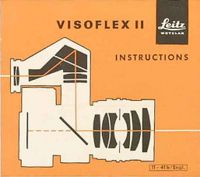 |
| |
Leica Visioflex |
| |
|
With the introcution of the EVF, usually known as a Electronical View Finder but in the case of Leica a Elecronical Visioflex Finder - with a clear design and usability reference back to the Visioflex - Leica M is testig the waters for focus confirmation and live view. To begin with as an add-on for the hotshoe (flash shoe) on top of the camera ... not far away from being an integrated part of a Leica M edition. The acoustic classic viewfinder is genious but quite expensive to produce. A built-in EVF would only make the camera more economical, and more compact. But it's just not what the Leica customers want ... just yet.
(The Visionflex attachment had a mirror inside and a separate viewfinder - basically an attachment to make the Leica M into a SLR camera).
Likewise, as obvious as it was that there was a gap between the Leica M and the X2, this hasn't been filled completely witht he Leica ME. There is still room for expansion of editions, and the introduction elsewhere of the worlds first full-frame (24x36mm) pocket camera with a fixed lens may inspire to similar Leica products between the Leica ME and Leica X2. With or without fixed lens.
A Leica Mini-M (Leica XM or something) seem to have been under development for a while and will - according to Stefan Daniel in a speech back in September 2010 - not be ready for Photokina 2012 ... So we are talking later than that (June 11, 2013 seem to be the date we now know is the release date of what Leica Camera AG calls a Leica Mini-M and position between the Leica M and Leica X2).
What the Mini part of it will be, apart from the size of the camera and the price (my guess is $4,000 - 5,000 as that is between the X2 and Leica ME and Leica M models), is a good question. A fixed lens coupled with full-frame is one idea, but it is more likely that Leica Camera AG want to supply an economical entry into the Leica M series of cameras and lenses. And if that is the thinking, the camera would have to take M mount lenses, so as to allow an economical entry and a way to expand the lenses (before one move to the bigger Leica M Type 240 cameras). This reminds of the Leica CL camera which wasn't an economical success. But the reason the CL wasn't a economical success was that Leica Camera AG back then sent so many ressources to Minolta teaching them to build cameras. The Leica rangefinder is one of those expensive things Leica might skip in a Leica Mini-M, or replace with a simpler rangefinder.
If one should predict a successful camera, think of previous succesful cameras people still talk about with a smile: The Leica CL with M mount, the Leica Minilux with built-in outstanding 40mm AF lens, the Leica Digilux 2 with the simplicity of a Leica M, yet a digital camera with zoom and AF.
From a Leica Camera AG viewpoint, the camera should be one existing customers (also) would like to have, something that new people would like to have, and something that would sell lenses and make an even larger customer base want to upgrade to the 'real' Leica M and Monochrom.
A Mini-M with CMOS sensor that takes Leica M lenses
If one follow the logics of what has been said before as well as this interview with Kaufmann and Leica Camera AG CEO Alfred Schopf from June 2011, it will be a Leica Mini-M featuring an APS-size sensor (or larger) that take Leica M lenses: "Our philosophy is that the best lenses will lead to better images... they are expensive but they are leading edge," Schopf says, while Kaufmann adds "Sensors will soon become a commodity, like film was. It's happening now. APS is a format you can buy rather cheaply, informally." They also hinted an electronic viewfinder. Then again, they also hinted Photokina 2012 and may have changed their mind in more ways since. And the world have since seen small cameras with full-frame.
| |
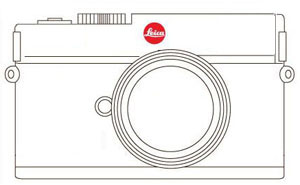 |
| |
Mini-M with no other viewfinder than EVF in which case the front would be blank. Or with an X100 type viewfinder (below)
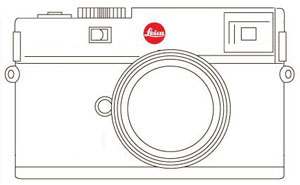 |
The most logical would be a CMOS-based camera that has a digital viewfinder and take M lenses, perhaps a Jonathan Ive/Leica M9 Titanium inspired design to sex it up a bit (omitting the expensive viewfinder and base it on CMOS will make it less expensive than a Leica ME; as would rethinking the whole body from mechanical design to electronical design. Maybe one does not need a review screen on the back). Why make another camera with a built-in zoom lens that doesn't lead to any upgrade directly with the M system. X2 and D-Lux 6 already exist as dead-end systems that make users jump directly to Leica M. What they need now is a system that gradually leads to Leica M and that one can 'share' with ones kids and spouses so the group of M users expands.
Re-inventing the Leica Digilux 2 would be a great favor to many, but that camera too is one that does not expand the M customers directly. It sort of does all you need to have.
What Stefan revealed about the Leica M Type 240 in September 2010
At the same briefing in September 2010 Stefan Daniel revealed more of what a future camera (now known was released two years later as the Leica M Type 240) would be: They are aiming at a mirrorles camera (the Leica M4, Leica M9 and so have always been mirrorless, but we're probably talking CMOS sensors that will enabe live view and thus focus confirmation). This camerea will also contain the R-solution which means that it will be able to take R lenses and offer focus confirmation for these. But it will mainly be a Leica M camera as the Leica R users are less than 1/10th the number of the Leica M users (which is why Leica Camera AG gave up spending 8 - 30 million Euro developing an R10 camera - the M9 research was 8 million, the Leica S2 was 30 million Euro). Also, Leica has two lens mounts, the M-bayonet and the S-bayonet. To add a new R or replacement for the R was simply not feasible.
In the same interview Stefan Daniel also said that Leica would not give up the Leica M9 style with the rangefinder. And probably wise in saying and thinking so; because many like the classic feel and look of the Leica M as it is with analog rangefinder mechanism and all. And it's an unique market position - nobody else in the entire world make such a camera.
The Leica M9 Titanium special edition play some role in this future of the M system, in the same manner as a project model play a role for the car industry. Some times they go into production, some times they don' t.
Undoubtedly several computer-generated designs exist of all sorts of Leica cameras between the Leica M and Leica X concepts. But likely the ones based on the M thinking will be the ones introduced in the future.
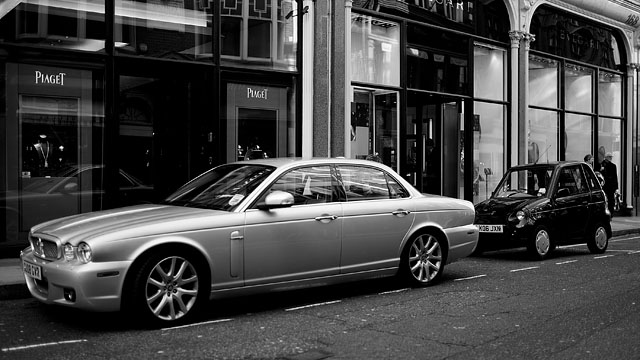
Leica M9. Photo: Thorsten Overgaard, London, March 2012.
Leica brand and Leica knowhow
The Leica brand holds the history and legacy of a camera brand that just had the concept right from start (in 1908) and since then have inspired other brands in the 35mm photography, and the Leica brand have recorded historic moments discreet and in high quality since what could be called popular photography. Kodak could be said to have the same legacy, but they are no more, and Hasselblad is also a strong brand with the moon landing in mind.
But one thing the camera brands just can't eem to get into their mindset, is the simplicity of the Leica. It should be so easy to just make a copy of the Leica concept with just the essential buttons. Yet Nikon, Canon, Panasonic, Funi, Samsung and many others continue to introduce simple camera concepts ... with a lot of confusion added on. As if more is better, which it is not when the simpel task at hand isjust to record light.
The Fuji X100 was the talk of Photokina 2010 and everybody seemed to go to the Fuji hall to have a look at the new wonder, then still a concept camera. It sold well, but the users complained that it was complicated.
Judging from the relieved Leica M owners who ditched their heavy and complicated dSLR cameras in the aftermath of the Leica M9 introduction, there should be a big and growing market for simplicity.
It is intersting that Bang & Olufsen (B&O) once was alone in the market for well-designed consumer electronics such as stereos and televisions. Then companies like LOEWE stole the idea and well-designed televisions have become almost the de facto standard. The simplicity of operation none really saw or cared to copy, it is still a mystery how to operate a television. Pushing the core value that no other brands seem to see clearly has to come from the company that understands the core of that philosophy. As in B&O who now re-invent them self with well-designed, simple, trendy products that goes well with Apple and are sold in the Apple Store also.
Question if if Leica can benefit from their simple and effective way of recording light with uncomplicated and high user control. As the Leica brand grows it becomes increasingy intersting to look to them, learn from them and work with them. As with Apple Computers. Perhapos new coorporations are in the future, as the Panasonic coorporation where Leica deliver Leica branded lenses and where they in some cases share camera models (the Digilux 2 was designed by Leica and adopted by Panasonic whereas the D-Lux 5 was designed by Panasonic and adopted by Leica).
How can you implement a philosophy in other brands that seemingly only a small company in Wetzlarer seem to understand the core of. Maybe the balance between who invents and who adopt cameras wlil change (as in the Leica X2), and perhaps an operating system for cameras. Leica has something the users want, the question is how to get it to them.
Leica and new technology
With the Leica M the door is open for implementing new technology and imroving the existing drop by drop in small modifications of what is now simply the Leica M. And Leica seem to constantly study and learn new technologies, and at a quite fast rate considered they believed film cameras to be the answer to all prayers just 8-10 years ago.
The Leica M is right in it's core and is the source of Leica, and has been since 1908. Basically.
Stefan Daniel, Director of Product Management and overall responsible for the development of the Leica M9, in a September 2010 briefing revealed that Leica Camera was looking seriously into auto focus, live view, digital viewfinder and even video recording as these technologies were moving fast forward. Especially digital viewfinder was something Stefan Daniel thought had improved a lot since the Leica Digilux 2 was introduced in 2004 (and even more after the Fuji X100).
At that point - in 2010 - this was not a popular viewpoint amongst an audience of Leica M users, but it does give an indication of how far ahead and how broad Leica perform their research.
He also stated that the Leica R system would not come back, nor would another new camera system. He pointed out that Leica already had the Leica M and the Leica S system and that the R&D that went into continuing to develop each system, not to mention production lines, customer service knowledge and more simply would make yet another system non-viable.

Leica M9 with 35mm Summilux-M ASPH f/1.4. Photo: Thorsten Overgaard, London, March 2012.
What might black & white photography develop into if someone actually applied modern technology to it?
So far the consumer-governed world of photography has wanted colors ever since the first colors came out. One thing is what consumers want, another is what producers can make consumers want. Hence we went from black and white television to color televisions to flat screen televisions, larger television screens and currently 3D.
I'm just giving this example to show. The photo industry have moved from black and white to colors, to different film systems such as discs and APS systems not to improve photography, but to make a new wave of consumers wanting a new system, implied that the new type of development would not only sell cameras but also bring the prices of film, developing and all up in level.
We see the same in color printers. Why doesn' Canon just continue making the same color ink cartridges for the same machine, why do they make new machines that require new inkjet cartridges?
Where am I getting with all this? What if ... nobody so far had seen any idea in developing a black and white sensor? And by that I mean not a color sensor that converts what it sees into black and white JPG images but a sensor that sees black and white and deliver a black & white RAW file. Wouldn't that change the game completely?
Would it sell cameras? Would it transfer film shooters into digital photography if the quality of digital black and white were better than film in sensitivity, grain/noise and mainly dynamic range?
(See article about Leica M Monochrom that was released on May 10, 2012 after this article was written).

Leica M9 with Leica
35mm Summilux-M ASPH f/1.4. Photo: Thorsten Overgaard, Nepal, March 2012.
Advertisement:


Hamburg. Leica M9 with Leica 50mm Noctilux-M f/1.0 at 160 ISO.
A bridge to the traditional camera market
Not all owners of cameras are aspiring to become a Henri Cartier Bresson or Pablo Picasso. It is said that if Leica hadn't had the sale of small cameras and the sale of Leica designed and branded optics to Panasonic, Leica wouldn't be. At all.
In the 1970ies Leica also produced the Leica CL with Minolta, a very compact and very economical camera that cane with a 40mm Leica C lens that had an M bayonet. In other words, an economical camera system that could mix with the M system in that one could start buying and using M lenses on the Leica CL before upgrading to a Leica M. The reason this is remembered as a painful period for some was not that the idea was bad, but that it was done in a way so Leica Camera took on the responsibility of shipping a lot of Minolta employees to Solms and teach them how to make cameras and lenses the Leica way. This was the main reason it is not remembered as a glorious period where Leica stuffed their bank account with increasing sale but a period where there was disruption and many expenses.
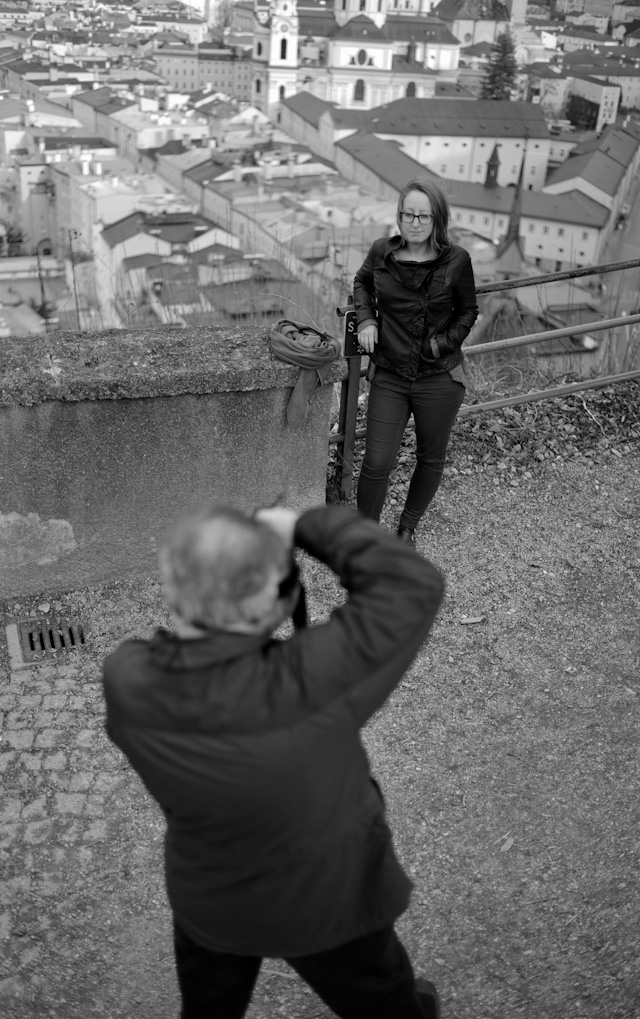
Leica M9 with 35mm Summilux-M ASPH f/1.4. Photo: Thorsten Overgaard, March 2012.
The Leica X1 came out of nowhere, totally unexpected by everybody at the same day as the Leica M9 was released. That they took on the form factor of the Ur-Leica was in my opinion a deroute from the ideal.
Those days are over and it's not a collector's item, it's a camera. So perhaps they would rethink the whole Leica X1 and perhaps mix it with the CL idea of using M lenses?
The Fuji X100 that was announced a year after the X1 and delivered much later was inspired greatly by the Leica X1. However, Fuji didn't manage to keep it as simple as Leica but did add some new things that Leica without doubt have noted could be useful if redone in a proper Leica manner.
A Leica X2 as an upgrade of the Leica X1 is workable because many who buy a Leica D-Lux 1 follow every model to the current Leica D-Lux 6, and so could on expect many of the Leica X1 owners to upgrade to a Leica X2. And every single small Leica does in fact lead their owners onto the Leica M, which is the core system of Leica Camera.

Two ladies in Salzburg sharing images. Leica M9 with Leica 35mm Summilux-M ASHP f/1.4. Photo: Thorsten Overgaard, March 2012
CMOS or CCD sensors..?
What if ... it's none of those. What if Leica invented something new? In any case, Leica have used Kodak CCD sensors and also CMOS (for Leica X1 and Leica X2), and what they always do is put image quality and natural, truthful colors and tones in the forefront. So don't expect them to cut corners on the choice of sensors to provide live view (which has nothing to do with photography [light] but is just a usability feature) or to beat Nikon on their 250,000 ISO.
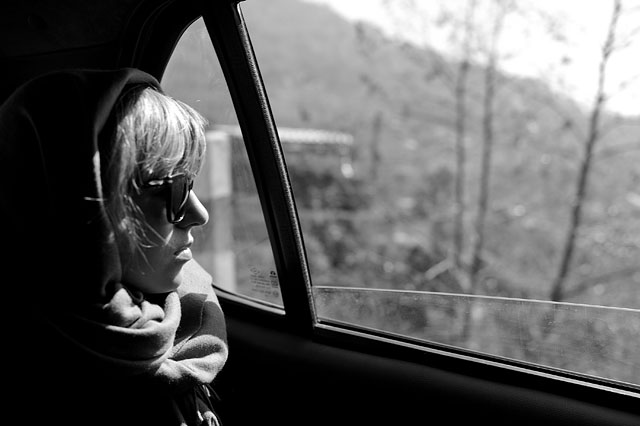
Leica M9 with Leica 35mm Summilux-M ASPH f/1.4. Photo: Thorsten Overgaard, Nepal, March 2012.
What about the M10 then ..?
"The Leica M9 is quite perfect, so why bother?" you might say. At least that is what I am thinking. I am not in need of a Leica M10 anytime soon.
But then imagine the scenario that a fellow is in a camera store, and here he is looking at the two month old Nikon D800E and the one month old Canon 5D III ... and then the pretty and perfect Leica M9 that is almost three years old. Imagine the dilemma. He need a brand new M-something to justify buying the Leica.
Or imagine you wanted to buy a Leica M9 because ... well, just because it is such a nice camera. But it's given that the Leica M10 is coming some day, you think, and will it be sooner or later. In any case it will affect what you get for your money because you may not want to buy an M10 next month - and how will it affect your investment if a new Leica M10 comes out in the next months or within the next year?
For the reason of life continuity and the ability to continue to spit out Leica M cameras and M lenses, the M10 has to come out in a not so distant future. It would be stupid of Leica if they didn't have a plan to meet the rumors in the market about a Leica M10 (which automatically slows down the sale of Leica M9). Photokina 2012 in September would be a good occasion, because it's not coming on May 10 2012!
Monday 10th of September a week before Photokina could be a good date, else we are talking Marc 10 or May 10, 2013. But most likely we will get the Leica M10 on the special event on September 17, the evening before Photokina opens officially. Delivery times ... hopefully some drops right after the release, but likely there will be some months between Photokina and then actual delivery ... and then again a waiting list of months. When the first Leica M Monochrom production models were delivered from Meister Camera on August 18, they also stated on their website that there was a 6 month delivery time for new orders.
When the Leica M9 was released in 2009 a few hundred cameras were available immediately, and then after that the wailing list was months for the next two years or so.
So shoud the M10 be available in unlimited numbers ... then that would be a larger surprise than that the Leica M10 is coming!
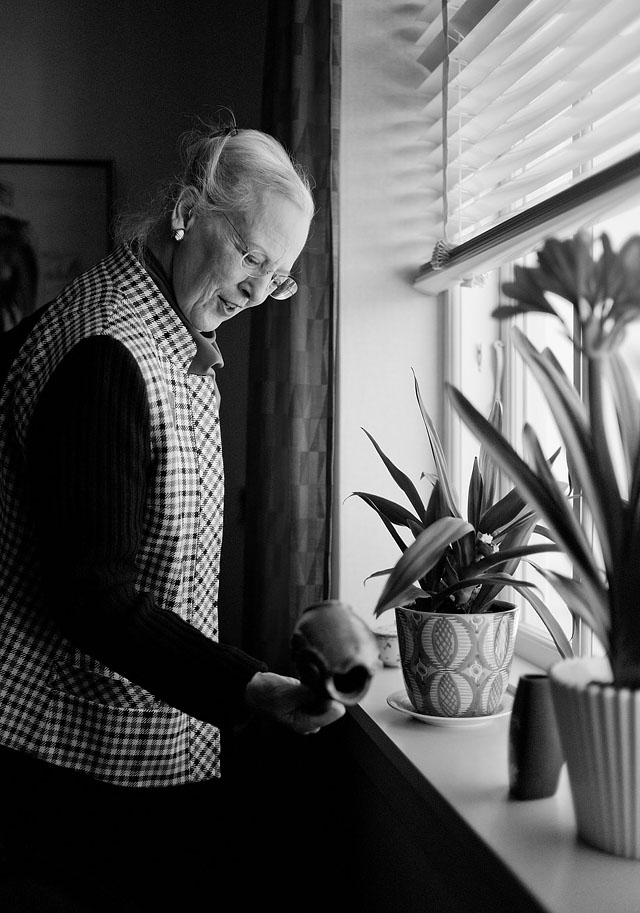
Queen Margrethe II of Denmark. Leica M9 with Leica 35mm Summilux-M ASPH f/1.4. Photo: Thorsten Overgaard, April 2012.
Maybe ...
Leica seem to know how their market works very well. First you buy M8, then you buy M8.2, then comes Leica M9 and you buy that one. Then cones Leica M9 Titanium that generates a lot of PR and sells 500 cameras (not to mention the 20-30 prototypes that has a very special value for later and may finance the whole R&D in fact), then comes the Leica M9-P and again many must admit they like that one so much better that they have to help the second-hand market grow by donating their Leica M9 to new users via eBay and get the Leica M9-P - which by the way also is the first one in Silver why you may as well get two of them. And in between comes a few special editions.
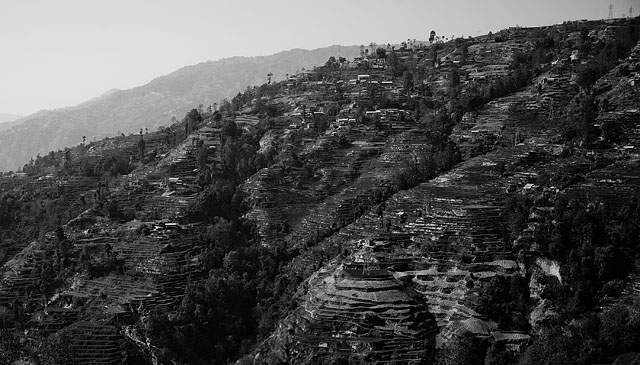
Leica M9 with Leica 90mm Summarit-M f/2.5. Photo: Thorsten Overgaard, Nepal, March 2012.
Not to mention, many Leica M owners also buy an X1 or X2 for the spouse (just to have an excuse to get it), and for the car they need the Leica D-Lux 3, then the D-Lux 4, then the D-Lux 5, and perhaps the wife needs the D-Lux 5 in titanium.
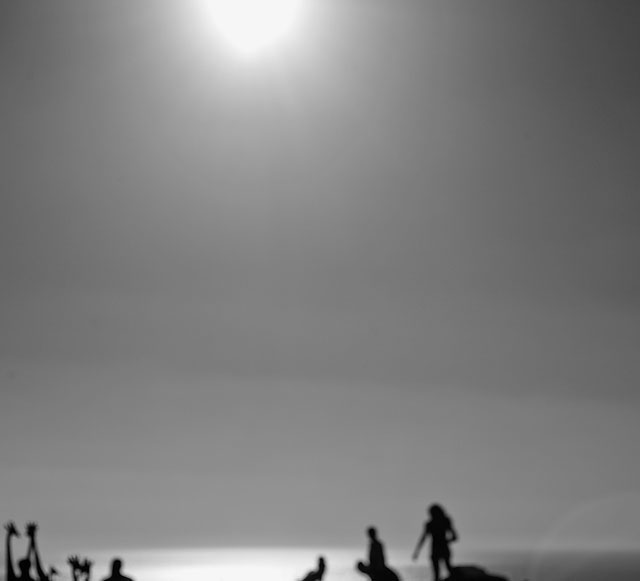
Leica M9 with 90mm Summarit-M f/2.5. Photo: Thorsten Overgaard, Cape Town, January 2012.
Continues on Page 30 -->
|
![]()
